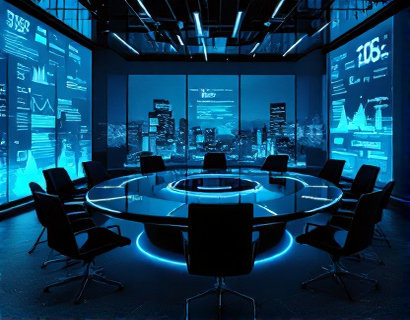Custom Business Card Creation for E-commerce Brands: A Guide to Professional Online Branding and Networking Success
In the digital age, where online presence is crucial for any business, the importance of professional branding extends beyond websites and social media to physical touchpoints. One such vital element is the business card, a small yet powerful tool for making lasting impressions and fostering connections. For e-commerce brands, freelancers, entrepreneurs, and corporate leaders, having a custom business card is not just a nicety but a necessity. This guide will delve into the significance of custom business card creation, offering insights and strategies to help you stand out in a crowded market.
Understanding the Role of Business Cards in Branding
The business card serves as a tangible representation of your brand, encapsulating your identity and values in a compact format. For e-commerce brands, which often lack a physical storefront, business cards become an essential means of introducing yourself to potential clients, partners, and collaborators. A well-designed card can enhance your professional image, convey credibility, and leave a memorable impression. In an era where first impressions are made online, a custom business card can bridge the gap between digital and physical interactions, reinforcing your brand's presence across all touchpoints.
Key Elements of a Custom Business Card
A custom business card should include several key elements to effectively communicate your brand's message. These elements include your name, title, company name, contact information, and a unique design that reflects your brand's personality. The design should be clean, professional, and consistent with your overall branding, whether it's a minimalist approach or a bold, colorful scheme. Including a QR code that links to your website or a specific landing page can also enhance the card's functionality, providing recipients with immediate access to more information about your business.
Design Considerations
When designing your custom business card, consider the following elements to ensure it stands out and resonates with your target audience:
- Color Scheme: Choose colors that align with your brand's identity and evoke the desired emotional response. For instance, blue conveys trust and reliability, while green symbolizes growth and harmony.
- Typography: Select fonts that are easy to read and reflect your brand's tone. Serif fonts can add a touch of elegance, while sans-serif fonts offer a modern, clean look.
- Imagery: Incorporate high-quality images or graphics that complement your brand and add visual interest. Ensure that any images are relevant and enhance the overall design.
- Layout: Organize the information in a logical and aesthetically pleasing manner. Balance text and visual elements to avoid clutter and ensure readability.
Benefits of Custom Business Cards for E-commerce Brands
Custom business cards offer numerous benefits that can significantly impact your brand's success. Here are some key advantages:
Firstly, a custom business card helps differentiate you from competitors. In a sea of generic, off-the-shelf cards, a unique design can make your brand memorable and distinguish you from others in the industry. This differentiation is crucial in building brand recognition and establishing a strong online presence.
Secondly, custom business cards enhance professionalism and credibility. A well-designed card reflects attention to detail and a commitment to quality, which can instill confidence in potential clients and partners. This professionalism is particularly important for e-commerce brands, where trust is built over time through consistent and high-quality interactions.
Thirdly, custom business cards can drive traffic to your website. By including a QR code or a URL, you provide a direct and convenient way for recipients to learn more about your business. This can lead to increased website visits, higher engagement, and ultimately, more conversions.
Networking and Business Development
Networking is a critical component of business growth, and custom business cards play a pivotal role in this process. Whether you're attending industry conferences, participating in online webinars, or engaging in local business events, having a custom business card allows you to make a lasting impression and build meaningful connections. A professional card can open doors to new opportunities, partnerships, and collaborations that might not have been possible with a standard card.
Moreover, custom business cards can serve as conversation starters. A unique design or an innovative feature, such as a foldable or interactive card, can spark interest and initiate discussions. This can lead to valuable insights, feedback, and insights that can inform your business strategies and product offerings.
Creating Your Custom Business Card
Creating a custom business card involves several steps, from conceptualization to production. Here’s a step-by-step guide to help you through the process:
1. Define Your Objectives
Start by clarifying the purpose of your business card. What do you want to achieve with your card? Are you looking to increase brand awareness, generate leads, or simply make a professional impression? Understanding your goals will guide the design and content of your card.
2. Choose a Design Platform
Select a reliable and user-friendly design platform that offers a wide range of customizable templates and design tools. Many online platforms provide free trials or affordable subscription plans, allowing you to experiment with different designs without a significant upfront investment. Look for platforms that offer a variety of design elements, such as fonts, colors, and graphics, to ensure you can create a card that truly represents your brand.
3. Select a Template
Browse through the available templates and choose one that aligns with your brand's aesthetic and objectives. Templates can serve as a great starting point, providing a structured framework to build upon. Customize the template by adding or modifying elements to better suit your needs. Pay attention to the balance between text and visual elements to ensure the card is both informative and visually appealing.
4. Add Essential Information
Include the following essential information on your business card:
- Your name
- Title or position
- Company name
- Contact information (phone number, email, website)
- Optional: Social media handles, QR code, or a unique tagline
Ensure that the text is clear and legible, using a font size that is easy to read. Avoid overcrowding the card with too much information; focus on the most critical details.
5. Review and Revise
Once you have designed your card, take the time to review it carefully. Check for any typos, ensure the layout is balanced, and verify that all information is accurate. It’s also a good idea to get feedback from colleagues or mentors to gain different perspectives and make necessary adjustments.
6. Choose a Printing Service
Select a reputable printing service that offers high-quality materials and reliable delivery. Consider factors such as paper quality, printing methods (offset, digital, etc.), and finishing options (matte, glossy, embossing, etc.). High-quality materials can enhance the tactile experience of your card, making it more memorable.
Some printing services offer bulk discounts, which can be cost-effective if you plan to distribute a large number of cards. Additionally, look for services that provide fast turnaround times to meet your deadlines.
Enhancing Your Business Card with Digital Elements
In the digital age, integrating digital elements into your business card can significantly enhance its functionality and impact. Here are some innovative ways to do this:
QR Codes
Incorporating a QR code on your business card can provide a quick and easy way for recipients to access your website, a specific landing page, or a video presentation. To create an effective QR code:
- Choose a QR code generator that produces high-quality, scannable codes.
- Ensure the link is mobile-friendly and loads quickly to avoid frustrating users.
- Test the QR code before printing to ensure it functions correctly.
Place the QR code in a prominent location on the card, and consider adding a brief message encouraging recipients to scan it for more information.
Augmented Reality (AR)
For a more advanced approach, you can incorporate augmented reality into your business card. Using AR technology, recipients can scan the card with their smartphone to unlock interactive content such as 3D models, videos, or virtual tours. This can be particularly effective for brands in industries like real estate, automotive, or fashion, where visual demonstrations can significantly enhance the customer experience.
To implement AR, use a specialized app or service that creates AR experiences compatible with your card. Ensure that the AR content is relevant, engaging, and adds value to the recipient's experience.
Distributing Your Custom Business Cards
Once your custom business cards are ready, the next step is to distribute them effectively. Here are some strategies to maximize their impact:
First, tailor your distribution to your target audience. Identify events, conferences, and networking opportunities where your potential clients and partners are likely to attend. This targeted approach ensures that your cards reach the right people, increasing the likelihood of meaningful connections.
Second, consider digital distribution as well. Share high-resolution images of your business cards on your website, social media profiles, and email newsletters. This not only promotes your brand but also provides a digital version for those who prefer or need it.
Third, encourage recipients to keep your card and use it. A well-designed card is more likely to be treasured and referred to when needed. You can also follow up with a thank-you note or email after an event, reinforcing the connection and keeping your brand top of mind.
Measuring Success
To gauge the effectiveness of your custom business cards, track key metrics such as the number of cards distributed, the number of leads generated, and the conversion rate of those leads into clients or customers. Use surveys or feedback forms to gather qualitative insights on how your cards are perceived and what improvements can be made for future designs.
Regularly review these metrics to refine your strategy and optimize your business card design for better results. Continuous improvement will help you stay ahead of the competition and maintain a strong online and offline presence.
In conclusion, custom business cards are a powerful tool for e-commerce brands, freelancers, and corporate leaders looking to enhance their professional image and network effectively. By investing time and effort into designing a unique and high-quality card, you can make a lasting impression, drive traffic to your website, and foster valuable connections. Embrace the blend of traditional and digital elements to create a comprehensive branding strategy that resonates with your audience and propels your business forward.











































